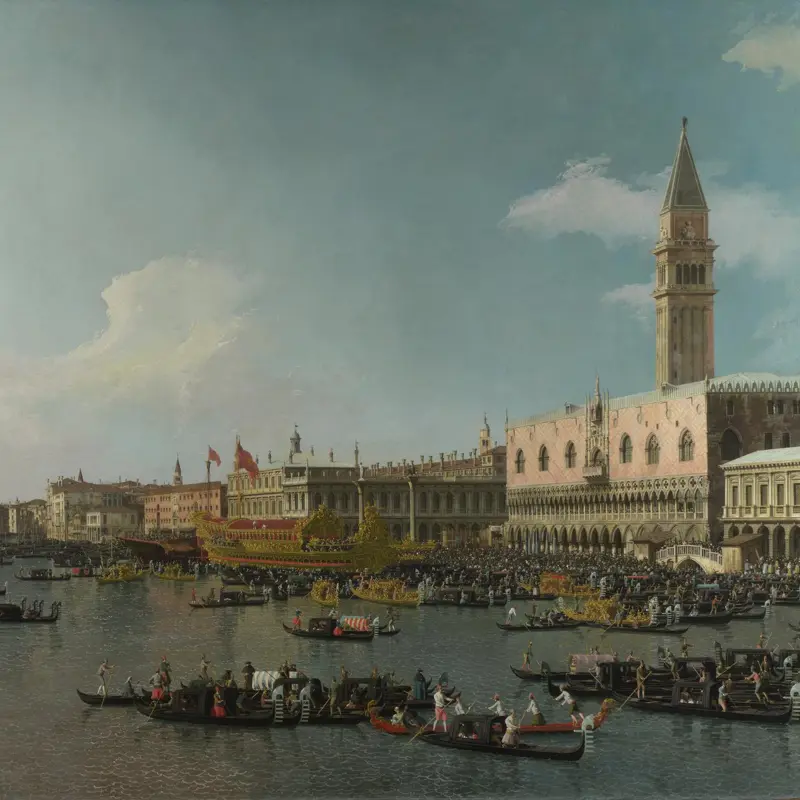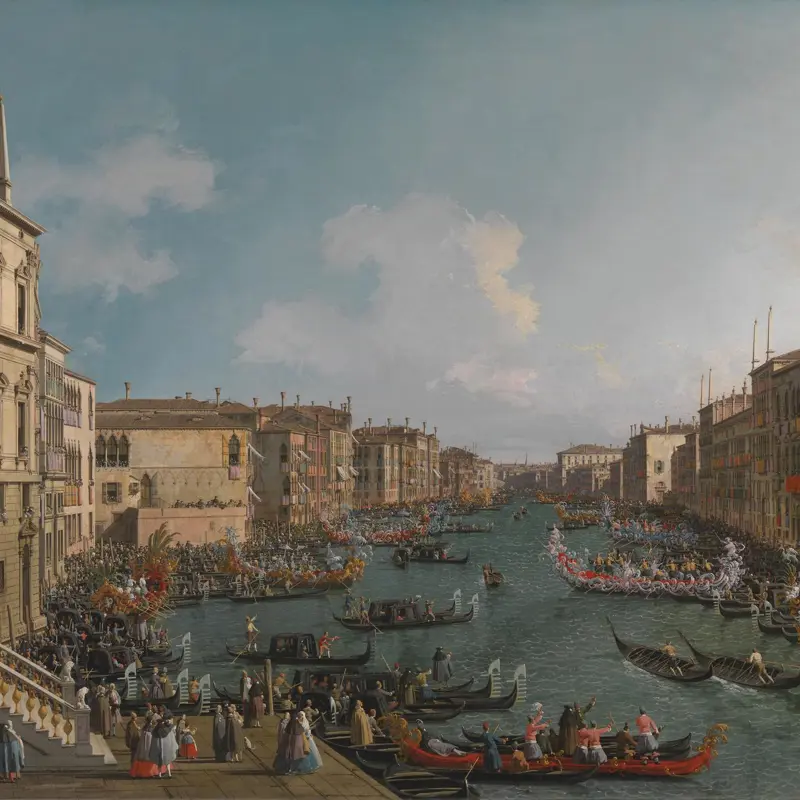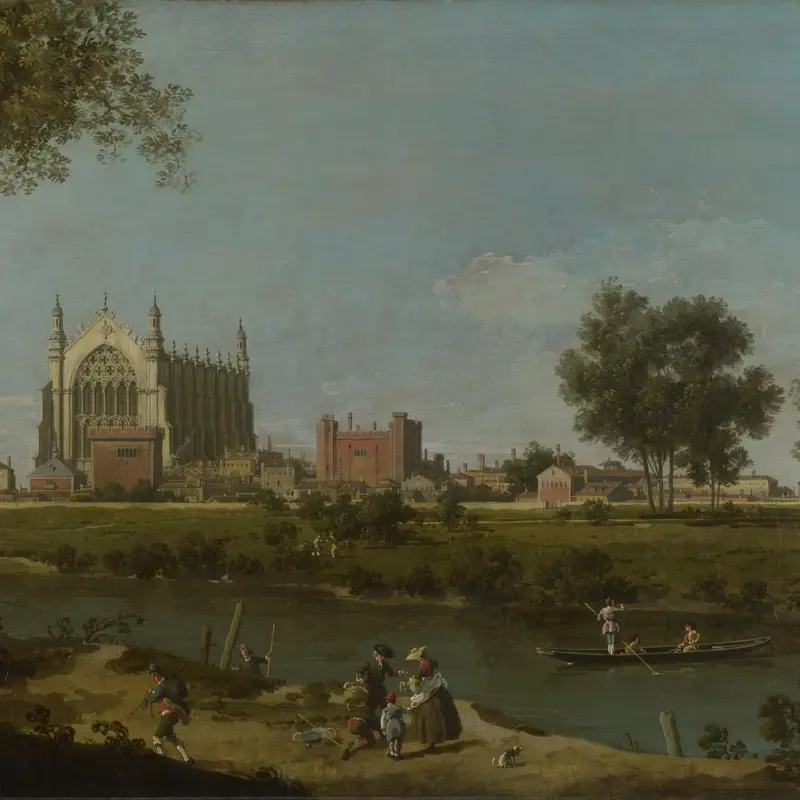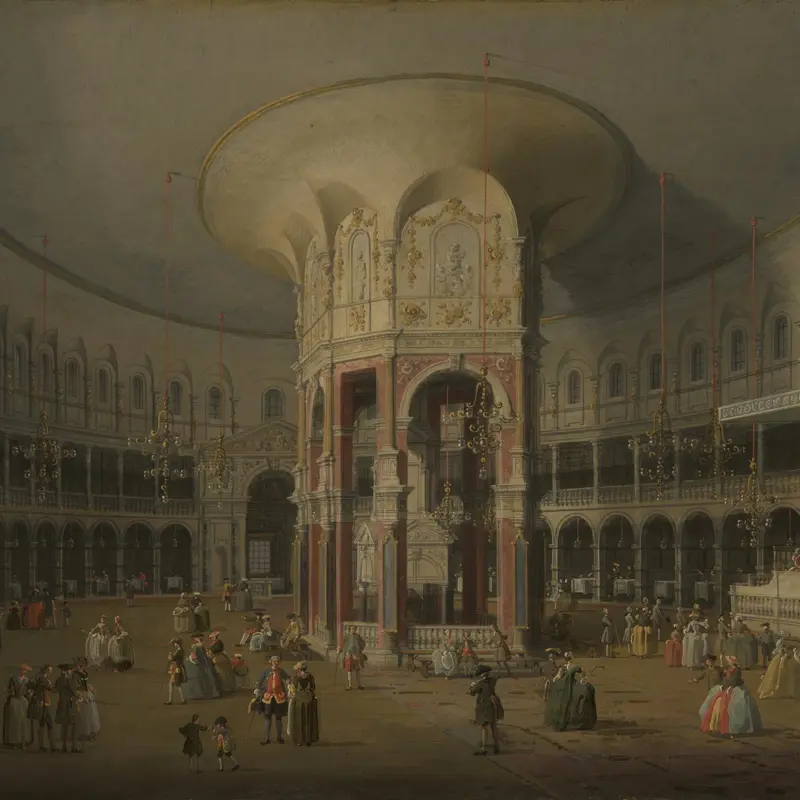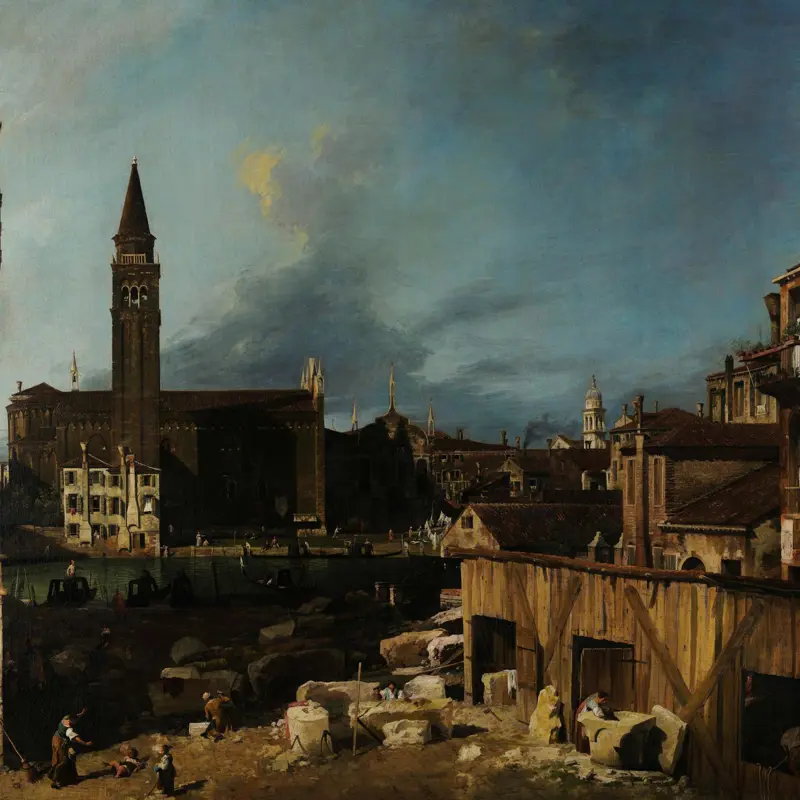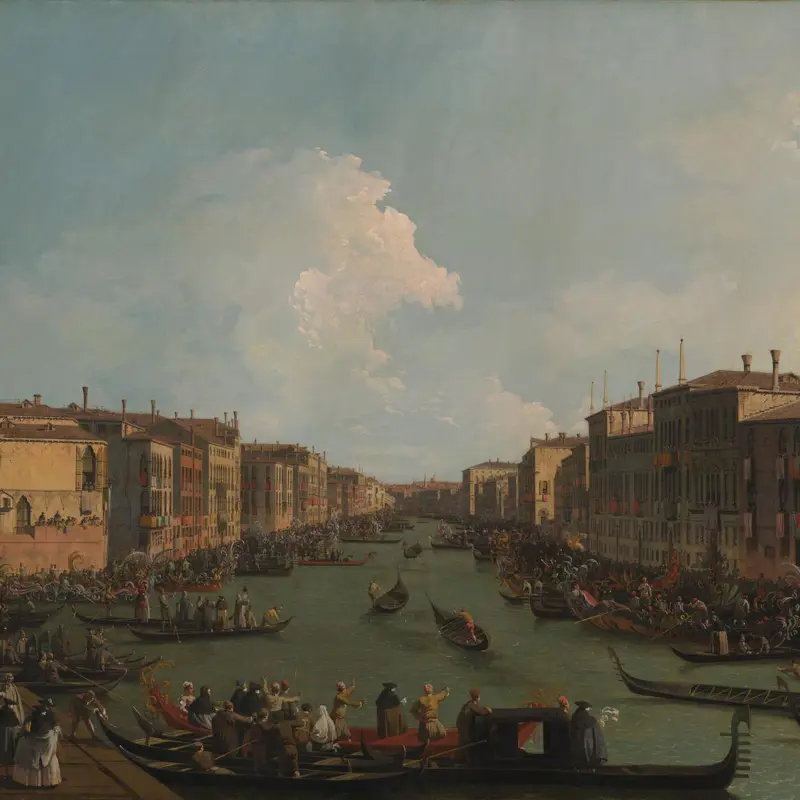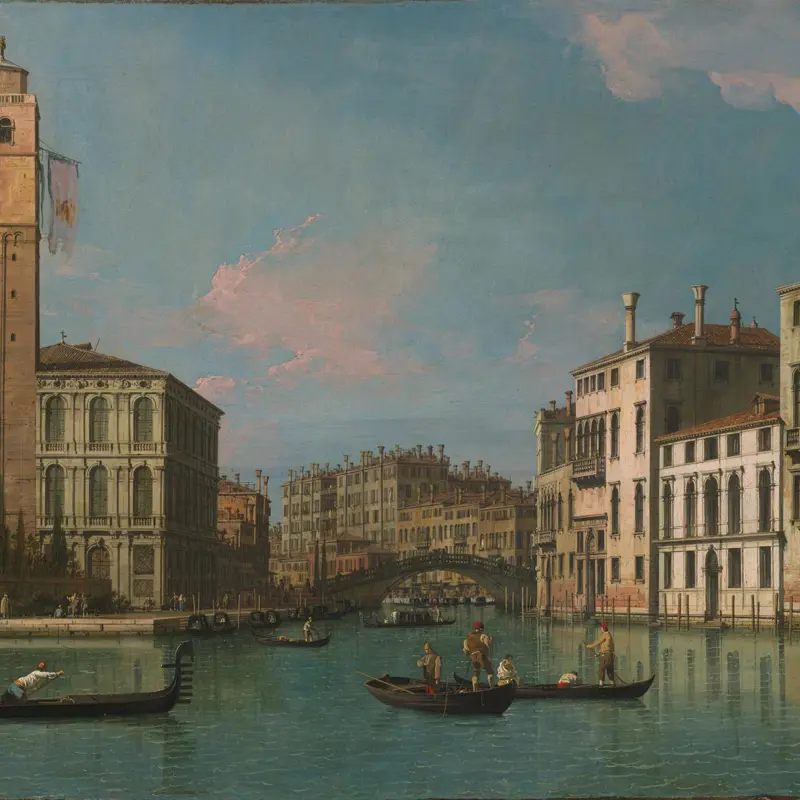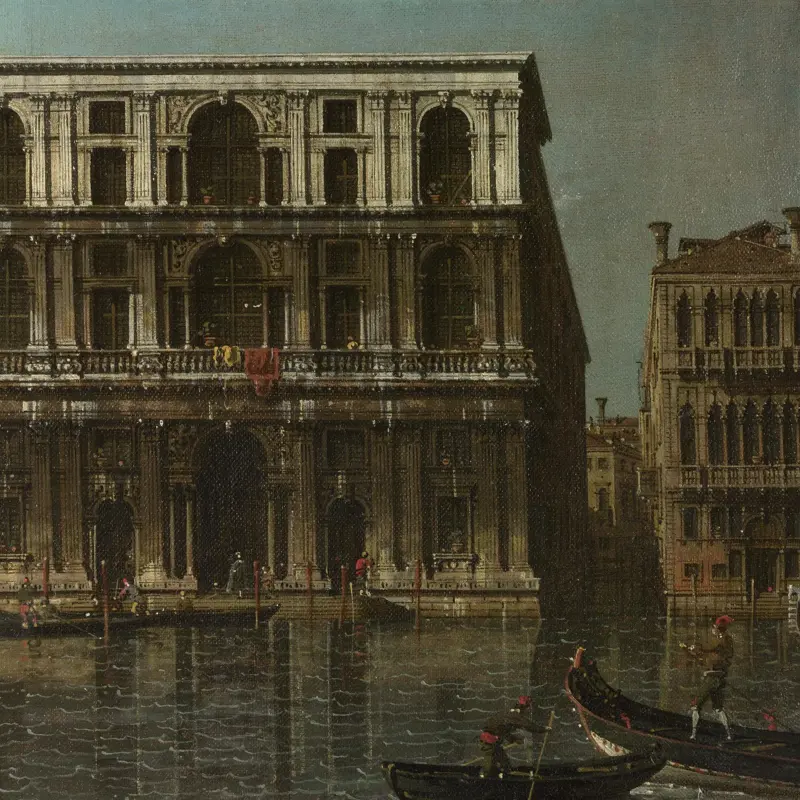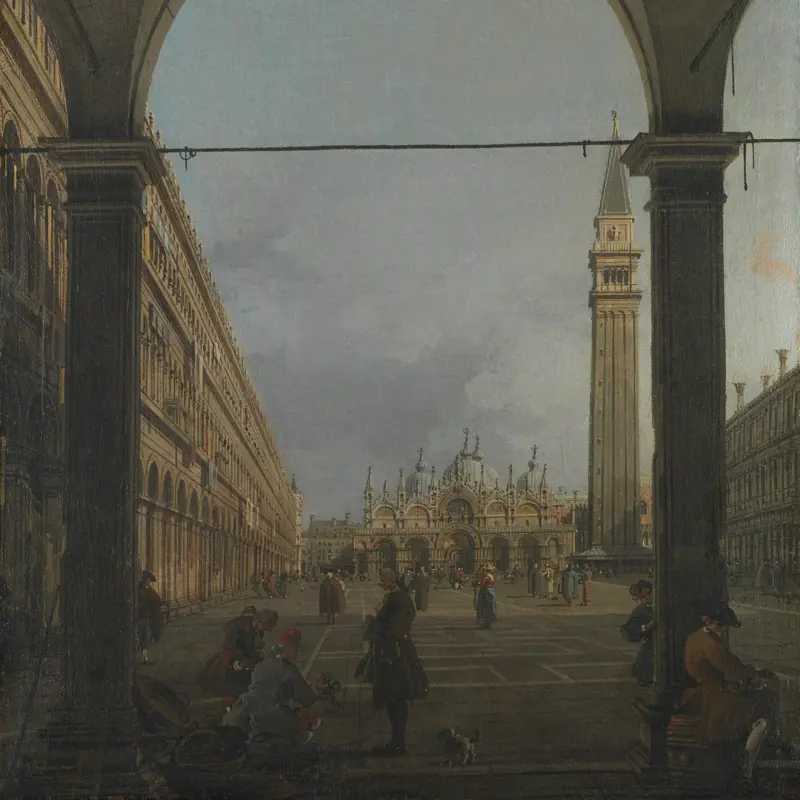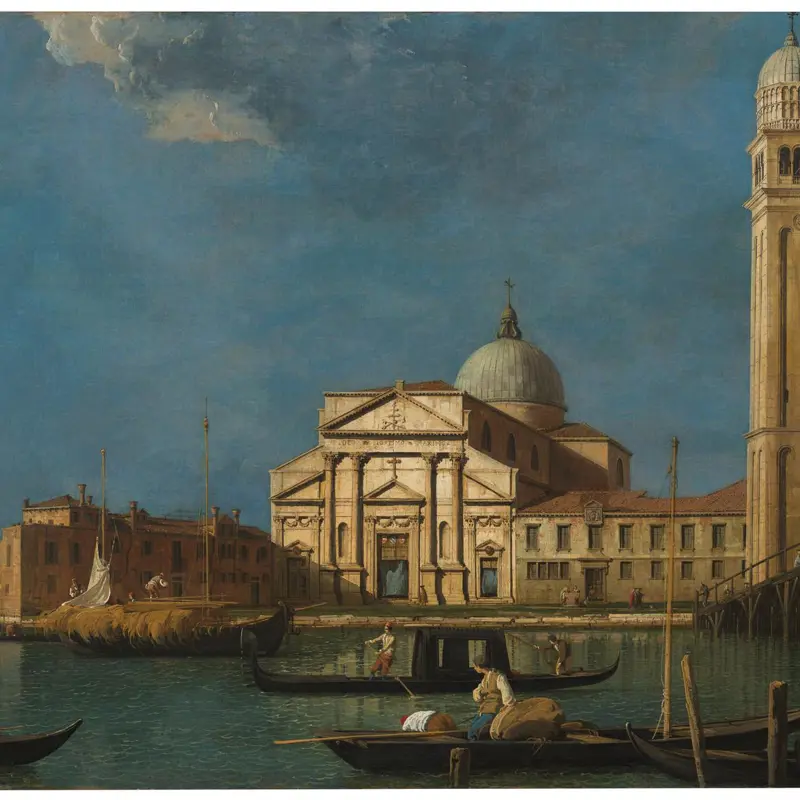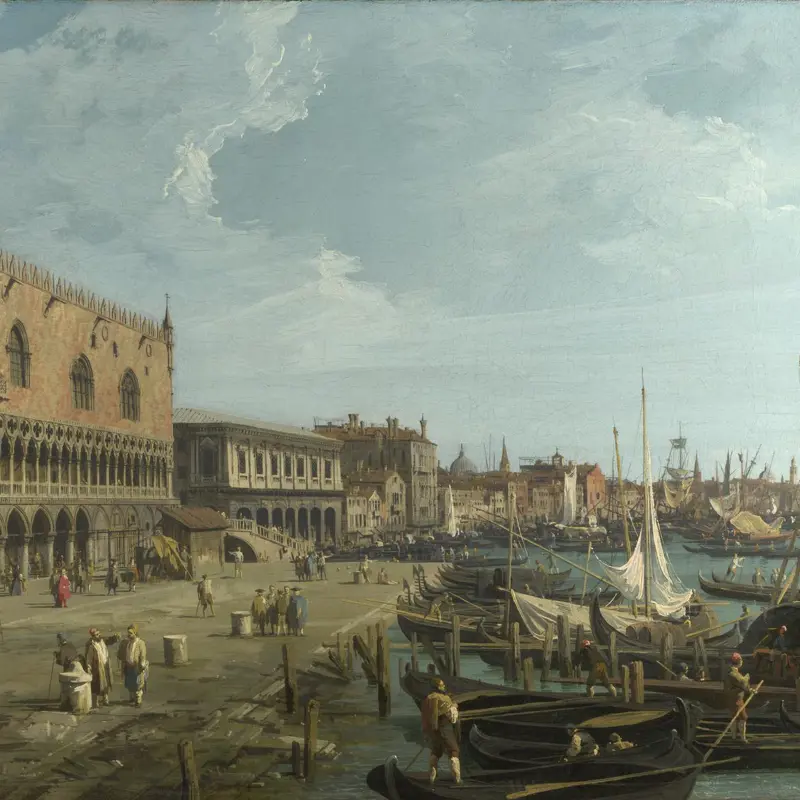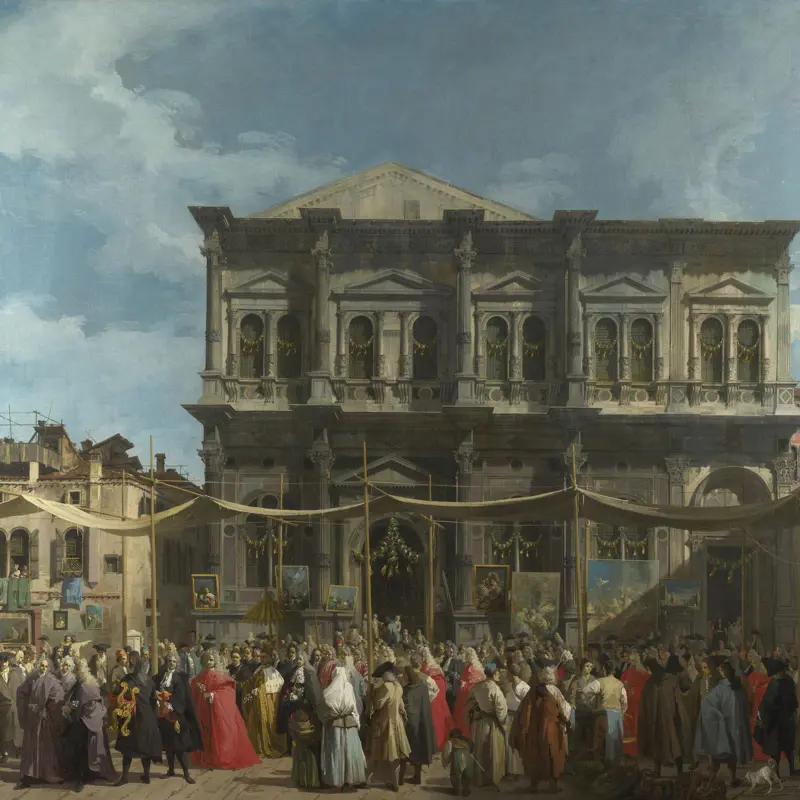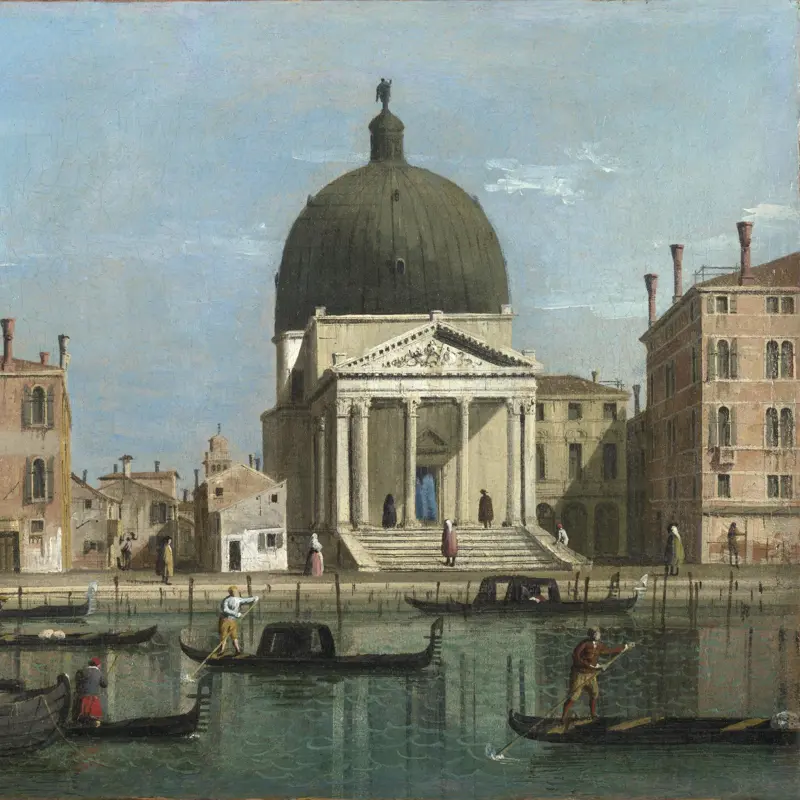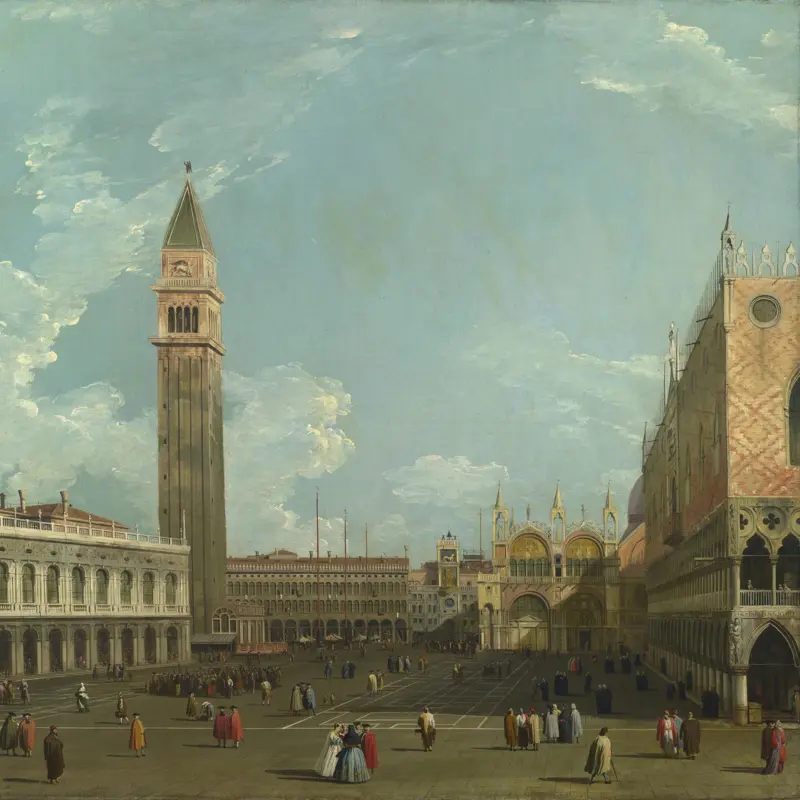Canaletto, 'Venice: The Basin of San Marco on Ascension Day', about 1740
About the work
Overview
Looking across the basin of San Marco, this vast view captures the scale and splendour of a ceremony taking place along the waterfront. Boats carrying spectators and animated gondoliers surround the gold and red state barge or Bucintoro, its upper deck crowded with figures. Every year on Ascension Day, the Bucintoro was rowed out onto the lagoon where the doge (the head of the Venetian state) cast a blessed ring into the water to symbolise the marriage of Venice and the sea.
A large crowd gathers along the quay; more spectators spill onto the balconies of the Doge’s Palace to the right and peer out from the bell tower of San Marco beyond. Canaletto conjured up this eager audience with great precision, in places using careful dots of paint to create the swarm of people. A hazy light illuminates the facades of the buildings and casts beautiful, soft reflections on the water.
Key facts
Details
- Full title
- Venice: The Basin of San Marco on Ascension Day
- Artist
- Canaletto
- Artist dates
- 1697 - 1768
- Part of the series
- Two Venetian Ceremonial Scenes
- Date made
- About 1740
- Medium and support
- Oil on canvas
- Dimensions
- 121.9 × 182.8 cm
- Acquisition credit
- Bequeathed by Lord Revelstoke, 1929
- Inventory number
- NG4453
- Location
- Room 33
- Collection
- Main Collection
- Frame
- 18th-century English Frame (original frame)
Provenance
Additional information
Text extracted from the ‘Provenance’ section of the catalogue entry in Michael Levey, ‘National Gallery Catalogues: The Seventeenth and Eighteenth Century Italian Schools’, London 1986; for further information, see the full catalogue entry.
Bibliography
-
1840E. Paoletti, Il fiore di Venezia, Venice 1840
-
1856E.A. Cicogna, Lettera… Intorno ad alcune regate veneziane, Venice 1856
-
1867J. Murray, Handbook for Travellers in Yorkshire, London 1867
-
1953M. Levey, 'Canaletto's Regatta Paintings', The Burlington Magazine, XCV/608, 1953, pp. 365-6
-
1956Levey, Michael, National Gallery Catalogues: The Eighteenth Century Italian Schools, London 1956
-
1967M. Butor, 'L'Oeil de Michel Butor sur Canaletto', Réalités, 258, 1967, pp. 36-43
-
1971M. Levey, The Seventeenth and Eighteenth Century Italian Schools, London 1971
-
1974A. Corboz, 'Sur la prétendue objectivité de Canaletto', Arte veneta, XXVIII, 1974, pp. 205-18
-
1975L. Puppi, Tout l'oeuvre peint de Canaletto, Paris 1975
-
1976W.G. Constable and J.G. Links, Canaletto: Giovanni Antonio Canal, 1697-1768, revised edn, Oxford 1976
-
1983M. Helston, Spanish and Later Italian Paintings, London 1983
-
1984M.A. Chiari, 'Nuove osservazioni su Canaletto e la camera ottica', Arte veneta, XXXVIII, 1984
-
1985A. Corboz, Canaletto: Una Venezia immaginaria, Milan 1985
-
1986Levey, Michael, National Gallery Catalogues: The Seventeenth and Eighteenth Century Italian Schools, London 1986
-
1989W.G. Constable and J.G. Links, Canaletto: Giovanni Antonio Canal, 1697-1768, 3rd edn, Oxford 1989
-
1989K. Baetjer and J.G. Links, Canaletto, (exh. cat. Metropolitan Museum of Art, 30 October 1989 - 21 January 1990), New York 1989
-
1991M. Levey, The Later Italian Pictures in the Collection of Her Majesty the Queen, 2nd edn, Cambridge 1991
-
1994National Gallery, 'Pictures Cleaned and Restored in the Conservation Department of the National Gallery, October 1994 - September 1995', National Gallery Technical Bulletin, XVII, 1996
-
1994J. Martineau and A. Robinson, The Glory of Venice: Art in the Eighteenth Century (exh. cat. Royal Academy of Arts, 15 September - 14 December 1994; National Gallery of Art, Washington, 29 January - 23 April 1995), London 1994
-
1998D. Bomford and G. Finaldi, Venice through Canaletto's Eyes (exh. cat. The National Gallery, 15 July - 11 October 1998; York City Art Gallery, 24 October 1998 - 3 January 1999), London 1998
-
2001
C. Baker and T. Henry, The National Gallery: Complete Illustrated Catalogue, London 2001
About this record
If you know more about this work or have spotted an error, please contact us. Please note that exhibition histories are listed from 2009 onwards. Bibliographies may not be complete; more comprehensive information is available in the National Gallery Library.
Images
About the series: Two Venetian Ceremonial Scenes
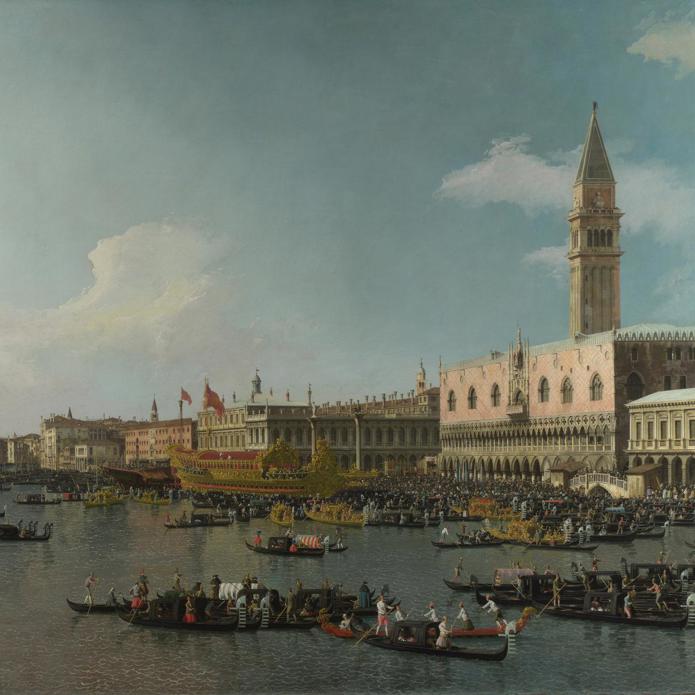
Overview
This pair of paintings – A Regatta on the Grand Canal and The Basin of San Marco on Ascension Day – captures two of the most popular annual festivals in eighteenth-century Venice: the gondola races and the Wedding of the Sea ceremony. Both fell into decline during the late eighteenth century but were revived in 1965 and are still enjoyed today.
Both events celebrate the history of the Venetian Republic. The regatta commemorates a naval victory against the forces of Dalmatia (modern-day Croatia) around the year 1000; the Wedding of the Sea relates to a peace treaty of 1178 between the Holy Roman Empire and the papacy, witnessed by the Doge (elected head) of Venice. He received a blessed ring from the Pope.
The paintings were made around 1740, when Canaletto produced his most commercially successful works. They were designed to appeal to wealthy foreign visitors as a reminder of Venice’s outstanding beauty and unique entertainments.

